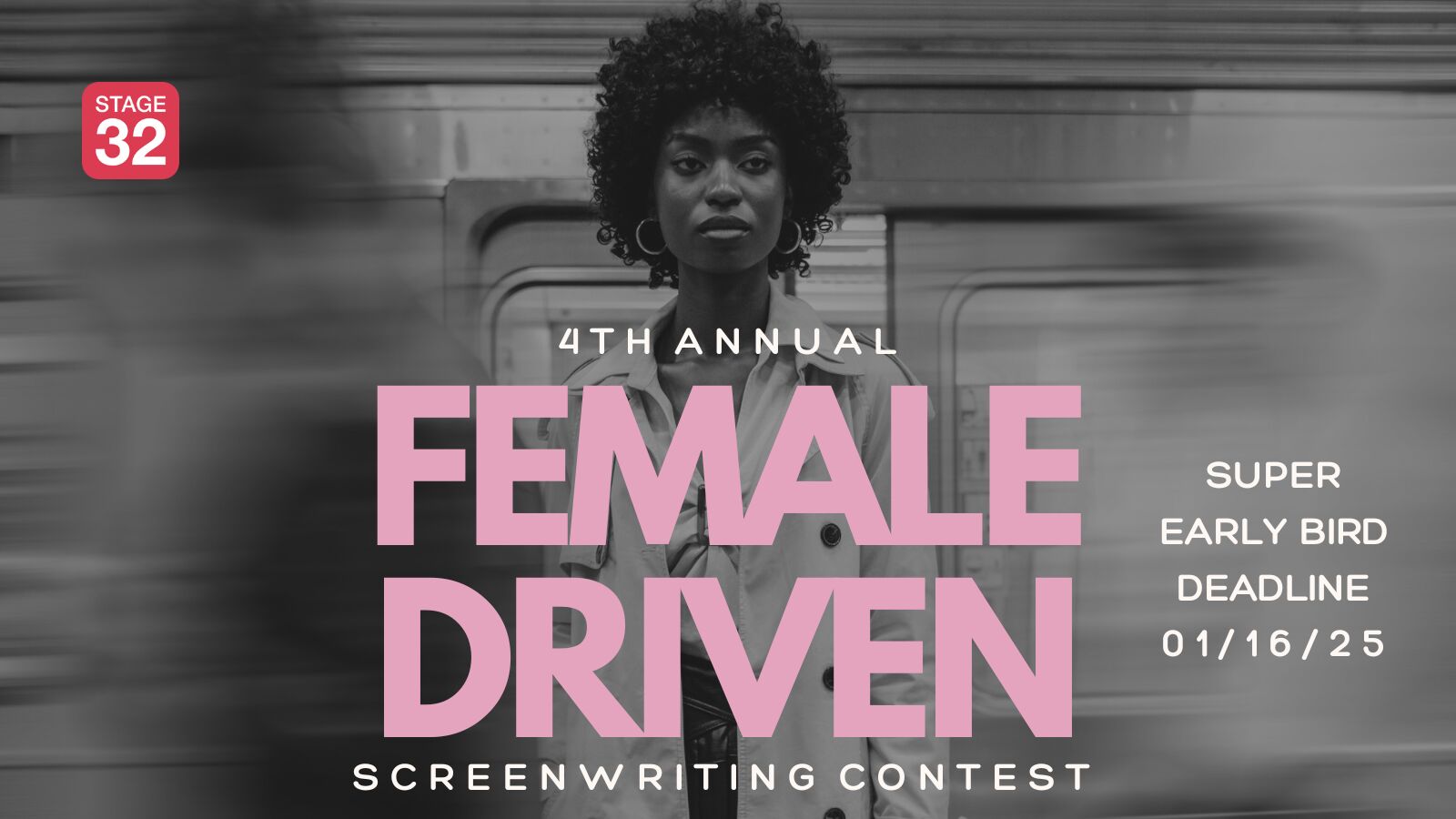This is a chapter on pitching from my book, THE LAST REVEAL - Movies, Screenwriting, and the Decline of Western Cinemazation, but--NOTE--this is about pitching BEFORE the script is written, not as we do here at Stage 32, where we are pitching to get them to request the already finished script:
Here’s a subject near, if not dear, to most screenwriters’ hearts: pitching. We’ll present several views on the subject, plus my own, and then I invite any comments.
Screenwriter and director, Paul Schrader (TAXI DRIVER, RAGING BULL, MISHIMA), prefers to tell his story to people all through his conceptual process, and prior to writing his first draft. The tale steadily grows until it lasts as long as 45 minutes, improving with each telling based on the reactions he gets. This all sounds to me like an elaborate method to develop the sales pitch of the story, an effort to grow it, get comfortable with it. Schrader’s testing it like a play, a try-out in “the provinces,” a rehearsal for the verbal “premiere” on Hollywood’s “Broadway.”
In THE CRAFT OF THE SCREENWRITER, Edited by John Brady, Simon & Schuster, 1981, p. 286, Brady questioned Schrader about his approach to story conception, asking, "So you see (the) screenwriter initially as a raconteur rather than someone at a typewriter in an attic."
Schrader responded: "Without doubt it’s part of the oral tradition because it’s a form of storytelling: it’s not a form of literature at all. Your writing counts for nothing."
And later, "In the end it doesn’t matter whether you’re a good stylist or not. A lot of very good screenwriters have been bad stylists. And a lot of extraordinary stylists have been bad screenwriters. The only reason it needs to be written down is so that it can be remembered, memorized, rewritten, sold... things like that."
When asked if he sees a screenplay, then, as a blueprint, Schrader says, "At best. I think that a blueprint is even too confining a term, because one doesn’t usually change a blueprint for a house, and it’s possible to change a script in medias res."
With Schrader’s approach, there’s no doubt you’ll become great at telling your story. That can only help the pitch you do for a producer or development exec. The problems with it are, as I see them, two-fold. First, you run the risk of telling someone your story and finding that they react badly. This can kill your energy for the piece. Depending on your estimation of the worth of their opinion, it can scare you into abandoning the project in the belief that they know more than you do. The other is that, telling and re-telling the thing over several weeks or months, you may run the risk of boring yourself with it. Any bloom on that narrative rose is long gone in the months between the 2 minute version and that 45 minute epic.
Paul Schrader notwithstanding, most writers hate pitching, even just pitching to friends. I’m one. The psychoanalysts out there chalk it up to fear of people and public speaking. I disagree, as I suspect most other writers will, also. I have spoken before hundreds in formal settings, and while I was pumped, slightly nervous, it was no more than would be natural. Most writers have no problem with talking to people, even studio people, in other situations, when the work isn’t on the line. I believe we hate pitching because we feel we are selling the story short, giving it away prematurely, in a less-than-fully-developed state.
Screenwriter and director, Shane Black (LETHAL WEAPON, THE LONG KISS GOODNIGHT, KISS KISS BANG BANG) agrees: "I’ve found two things about pitching. Number one is that it’s bad for writers because if you’ve ever had a great idea that you want to put on paper, one of the best ways to f--k yourself up is to tell somebody about it and blow all the energy that you have stored up, especially in pitching, where you have to do it three or four times; by the time you get to the paper all your energy’s gone. Number two is that it’s the antithesis of good storytelling, because before you show your story to somebody, you tell them the ending. You go in and you say, ‘Here’s what happens, these guys do this and here’s how it ends.’ Then you go and write it and now they’re expected to be excited reading it. I mean, it’s just a bad idea."
Source – AMERICAN SCREENWRITERS, Edited by Karl Schanzer & Thomas Lee Wright, Avon, 1993, p. 39.
For me, my story is gold-in-the-making. But my story isn’t “my story” until long after the first FADE OUT is typed. It is only “my story” after the last FADE OUT is typed.
The problem is that the story in description is this bizarre thing that’s not really the story at all. It is instead a thing about the story. You go in there, brimming with energy and hope, fascinated with the possibilities, seeing the things you can and will do with it. But the guy behind the desk doesn’t know any of that. All he knows is that one-sentence description, the logline, and that you’re the thing standing between him and lunch. So you’re already in a hole. You tell him your two hour movie in 5 or 10 minutes, at most 20. No matter, even with Schrader’s 45, it’s still “reductio ad absurdum.” Then you expect him to intuit all of your ideas for the thing. But he’s thinking about restaurants and the afternoon meeting with [insert Oscar-winning screenwriter name here]. Oh, and have I mentioned the phone calls? Each one that comes in seems to be timed to ring just before a plot point. Ten minutes later, after he’s hung up and notices you’re still there, he says, “I’m sorry, [someone else's name], where were we?”
Even if you’ve managed to climb to the top of your hole, with that, you’ve just fallen back in.
“More water? Here, let me fill that [hole] of yours.”
And ramping up your energy when you sense he’s just not “feeling it” only serves to make you seem desperate and ultimately pathetic.
Screenwriter and director, David Koepp (JURASSIC PARK, STIR OF ECHOES, GHOST TOWN) says this about pitching: "Pitches suck. Pitches are a drag. Other than SPIDER-MAN, I’ve never had a pitch that worked out well, because somehow they heard it differently than what you said. Or you said it in a way that implied something it’s not. Any time you pitch something and they say, “Oh yeah, we’ll buy that!” by the time you turn it in either the person who bought it has been fired, or the person who bought it says, “Oh, that’s what you meant?” By then it’s too late because you’ve already accepted the money and there you are – stuck with a person that didn’t want your movie in the first place, or at a studio that wanted something else entirely.
"As long as you’re going to the trouble of putting together a good pitch and flying out to California and meeting with a bunch of people and hawking your wares, the amount of time and trouble that it takes, it doesn’t take that much more to write a first draft. Then you can be absolutely clear what it is, and besides, a script always ends up somewhere you didn’t imagine. Whoever you thought would love it can’t stand it, and somebody you never dreamed would be interested thinks it’s great. If all goes well. Of course, sometimes they all hate it."
Source – BACKSTORY 5, Edited by Patrick McGilligan, University of California Press, 2010, pp. 83-4.
Terry Rossio and Ted Elliott have an article on their excellent website, WORDPLAY, wherein they offer their take on pitching. They literally suggest writers pitch using a display board with 15 – 20 sequences printed on 5 ½” x 8 ½” “half-sheets” displayed by act. The advantages are that,
1. It shows the entire story in one viewing, allowing the buyer to see that the whole movie is there and flows dramatically and logically.
2. The buyer is no longer staring at the writer, and is instead focused on the board, taking some of the pressure off.
3. They claim it allows the buyer to ask better questions, and with greater confidence, as they can better grasp things visually than from an audio memory of your pitch in fast fade.
There may be something to this, but anything less than a finished script is starting underwater, if you ask me. This is especially true for new writers without previous credits. But it even happens to screenwriters fresh off an Oscar: Eric Roth tells of going to work with Robert Redford (on THE HORSE WHISPERER) after winning a Best Adaptation Oscar for FORREST GUMP, and Redford saying to him, “What have you done for me lately?” – BACKSTORY 5, p. 152-3. He was already back in that hole having to prove himself.
Industry professionals will tell you that pitching is a fact of screenwriting life, so it’s best to get as good at it as you can. If you’re comfortable with it, Paul Schrader’s “tell and re-tell” method should help a lot. That is, if you can transcend the inevitable bad or weak reaction you may get, especially in the early going. Then, when you get to that meeting, use every trick, including the Rossio and Elliott method. Honestly, I’d probably come into the room like Mr. Bean, dropping things, breaking my easel, or scattering my cards all over. It wouldn’t be pretty. But, if there’s any edge to be gained, I agree, you’ve got to try it...
Aw, hell, I still hate it. #




1 person likes this
Nice one Lee Matthias